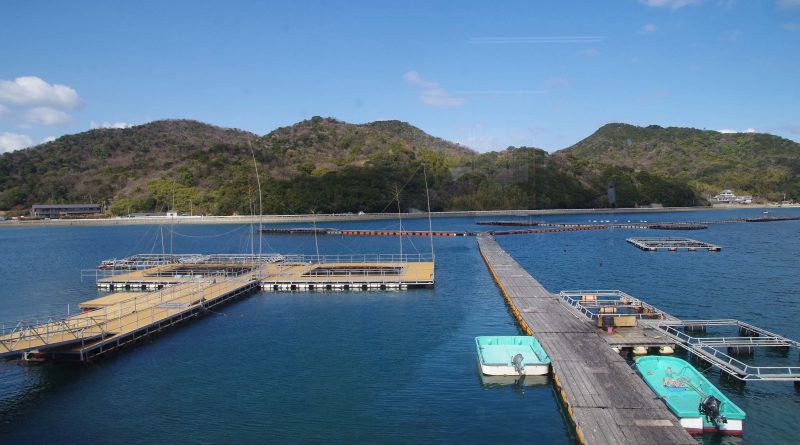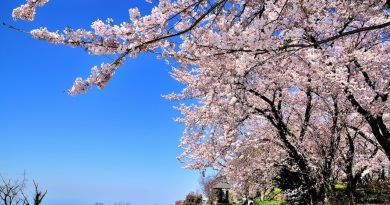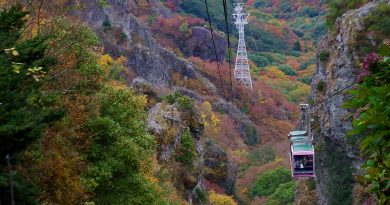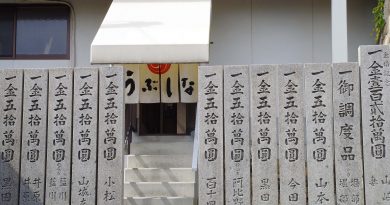Hiketa Adoike – The birthplace of hamachi aquaculture
In Japan, the freshwater aquaculture began from the Edo period; while, the saltwater aquaculture waited the Showa period to finally be profitable. Mr. Noami Wasaburo was born in a family of fishermen in Okawa-gun Hikedamachi (大川郡引田町, now Hikeda in Higashikagawa). In 1927, after Mr. Noami graduated from the school of fisheries in Mie prefecture, the fishermen’s life-conditions were so difficult and hard that they pushed him to experienced the saltwater aquaculture in Adoike where a lagoon faced the Setouchi Inland Sea and had a good fish catch.
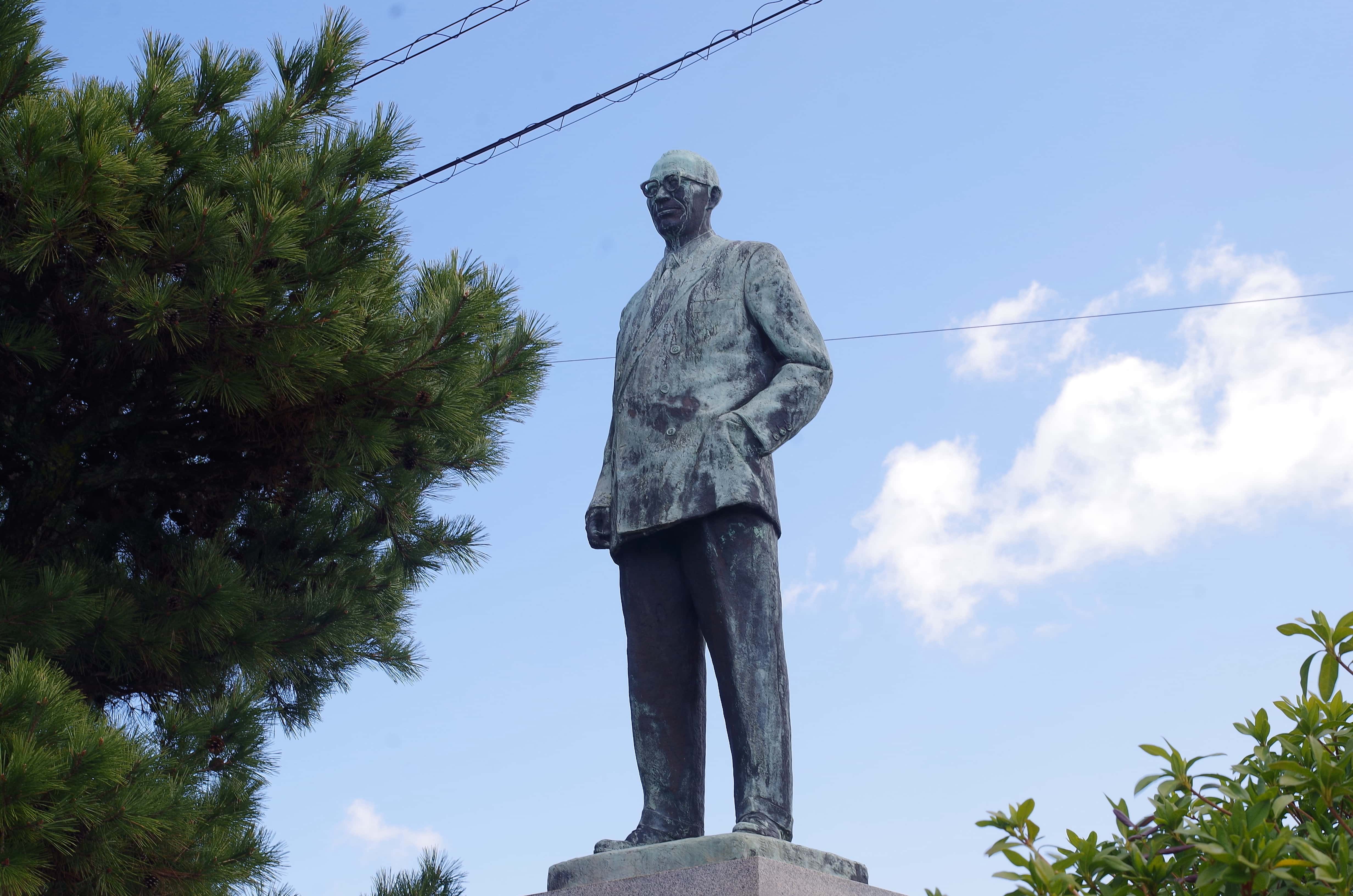 At first, Mr. Noami Saburo started to farm sea bream, flounder, and black sea bream who were naturally caught in the region. Through trial and error, he finally decided to focus on farming hamachi (young yellowtail) who grew faster, and founded his enterprise. Afterwards saltwater aquaculture improved and quickly spread from Kagawa prefecture to all over Japan.
At first, Mr. Noami Saburo started to farm sea bream, flounder, and black sea bream who were naturally caught in the region. Through trial and error, he finally decided to focus on farming hamachi (young yellowtail) who grew faster, and founded his enterprise. Afterwards saltwater aquaculture improved and quickly spread from Kagawa prefecture to all over Japan.
Then the reputation of Hiketa yellowtail spread everywhere.
In Kagawa, there are different designation for the yellowtail depending on their growth: tsubasu (嫩鰤魚) refers to a fish with a length below 40cm, hamachi (ハマチ) between 40 and 60cm, and buri (鰤魚) above 80cm. No matter their designation is, they are all yellowtail, and people usually prefer to eat hamachi and buri who have rich and delicious meat.
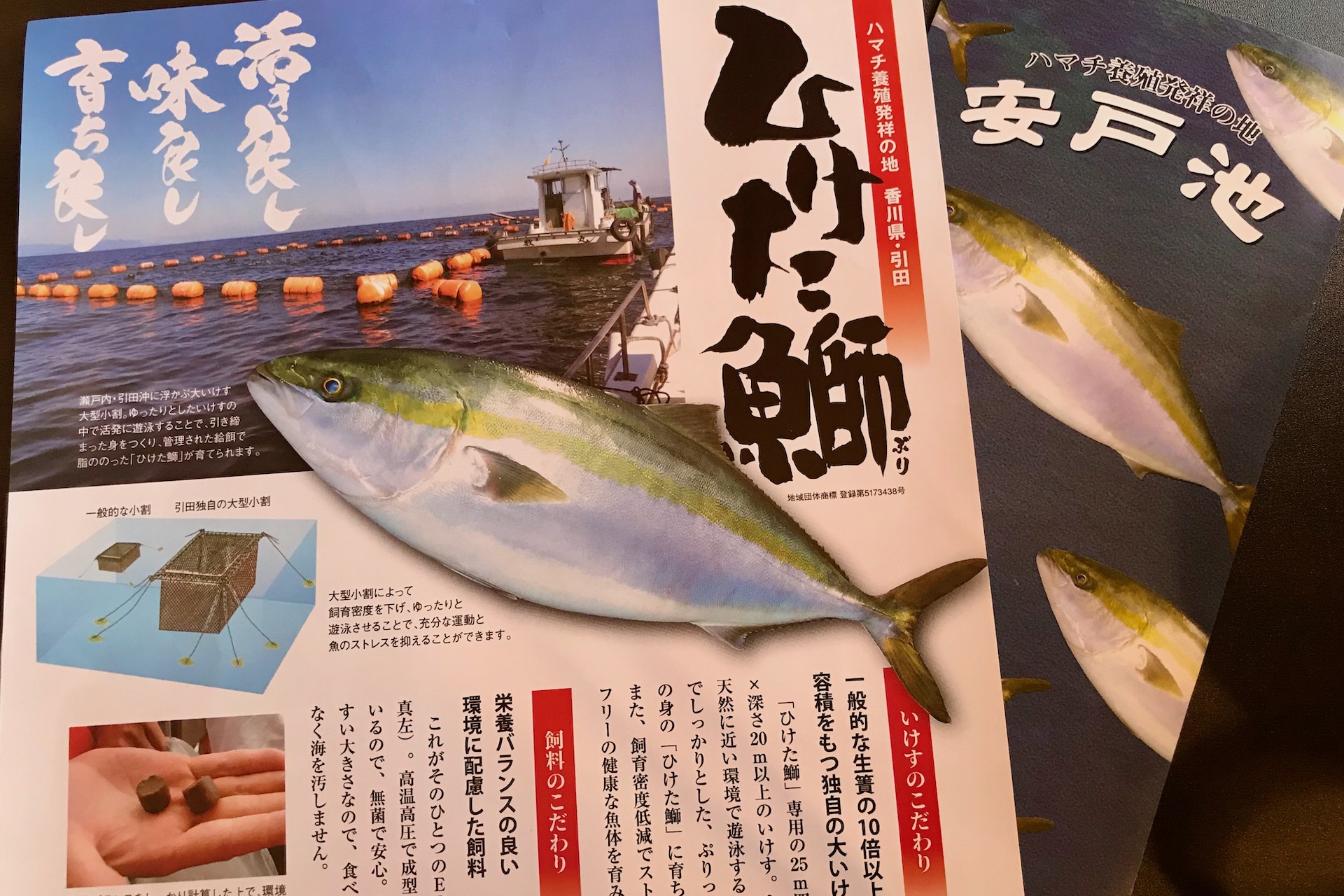 Including the environment and feed, “Hiketa yellowtail” grow under strict regulations and standards. From summer to autumn, buri are growing (sweeter) in water with a temperature different from the sea, when arrived November they reach their pick of flavors. That is why foodies are waiting for fresh buri sold in the early winter.
Including the environment and feed, “Hiketa yellowtail” grow under strict regulations and standards. From summer to autumn, buri are growing (sweeter) in water with a temperature different from the sea, when arrived November they reach their pick of flavors. That is why foodies are waiting for fresh buri sold in the early winter.
Buri’s nutrients are complete and include protein, essential amino acid, EPA which help to decrease low-density lipoprotein and fat, calcium, taurine, and DHA.
One of the advantages of buri farming is its stable price and the possibility to keep the breeding through the seasons. Besides, in winter, the price of farmed buri is always lower than wild buri; while in summer, the taste of farmed buri is better than the wild-caught, explaining why farmed buri sells so well.
Besides the large net cage culture of “Hiketa yellowtail”, there are two other buri farms in Kagawa. “Naoshimahamachi” who farms in the sea with fast-flowing tide and adds seaweed powder in their feed. On the other hand, the “Olive hamachi” farm feeds its buri with a feed incorporating grinding olive leaves powder. The three hamachi farmsproduce fish with different tastes and qualities, and together they are named “Hamachi Three Brothers”, known as a famous Kagawa prefecture brand.
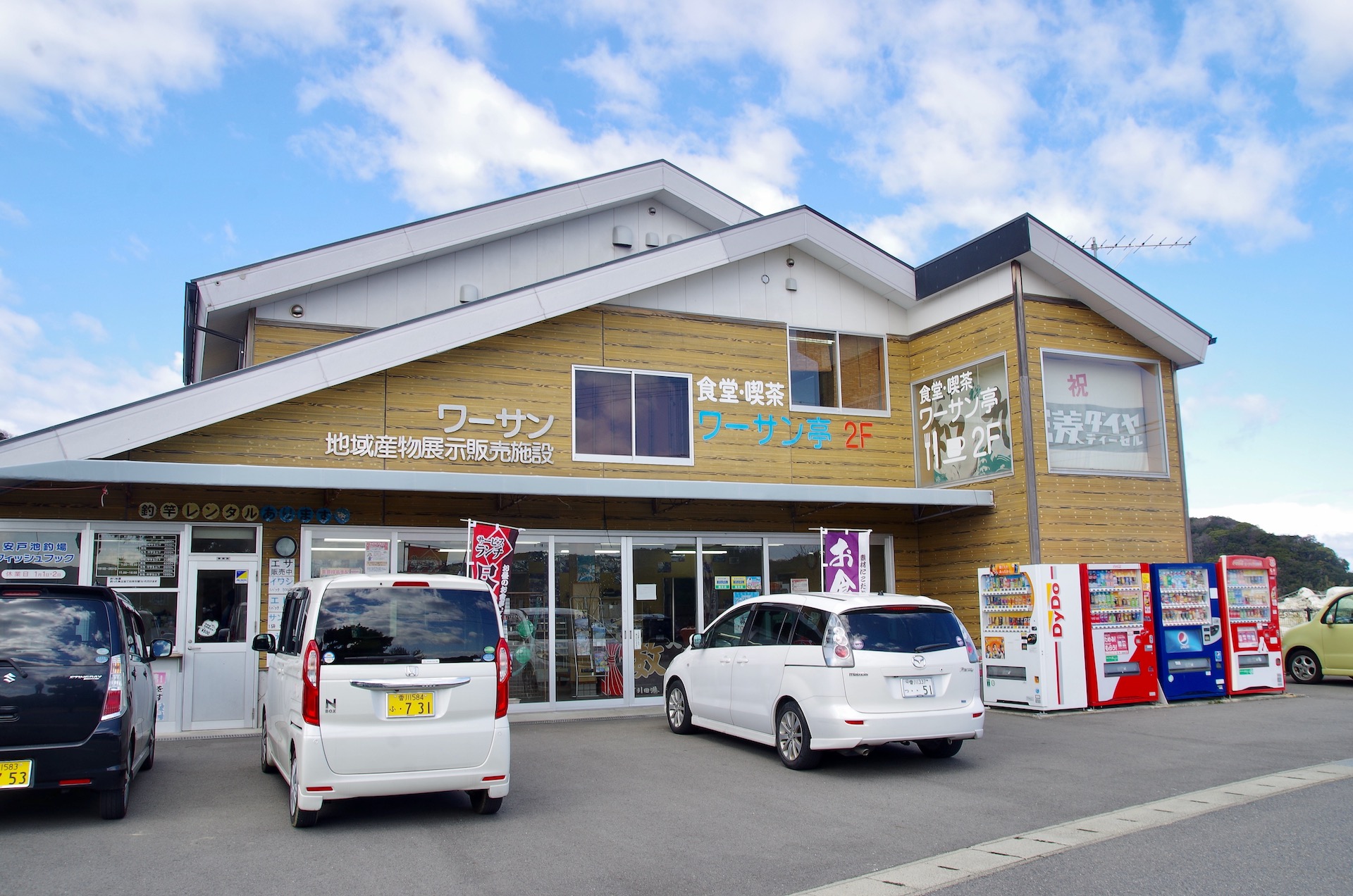 In Kagawa’s supermarkets and restaurants, in usual, they sell the fish from “Olive hamachi” which is light with a fresh taste. If you would like to buy or just taste the fish from “Hiketa yellowtail”, the local product center, “wa-san”, is the best place, just located beside the Adoike.
In Kagawa’s supermarkets and restaurants, in usual, they sell the fish from “Olive hamachi” which is light with a fresh taste. If you would like to buy or just taste the fish from “Hiketa yellowtail”, the local product center, “wa-san”, is the best place, just located beside the Adoike.
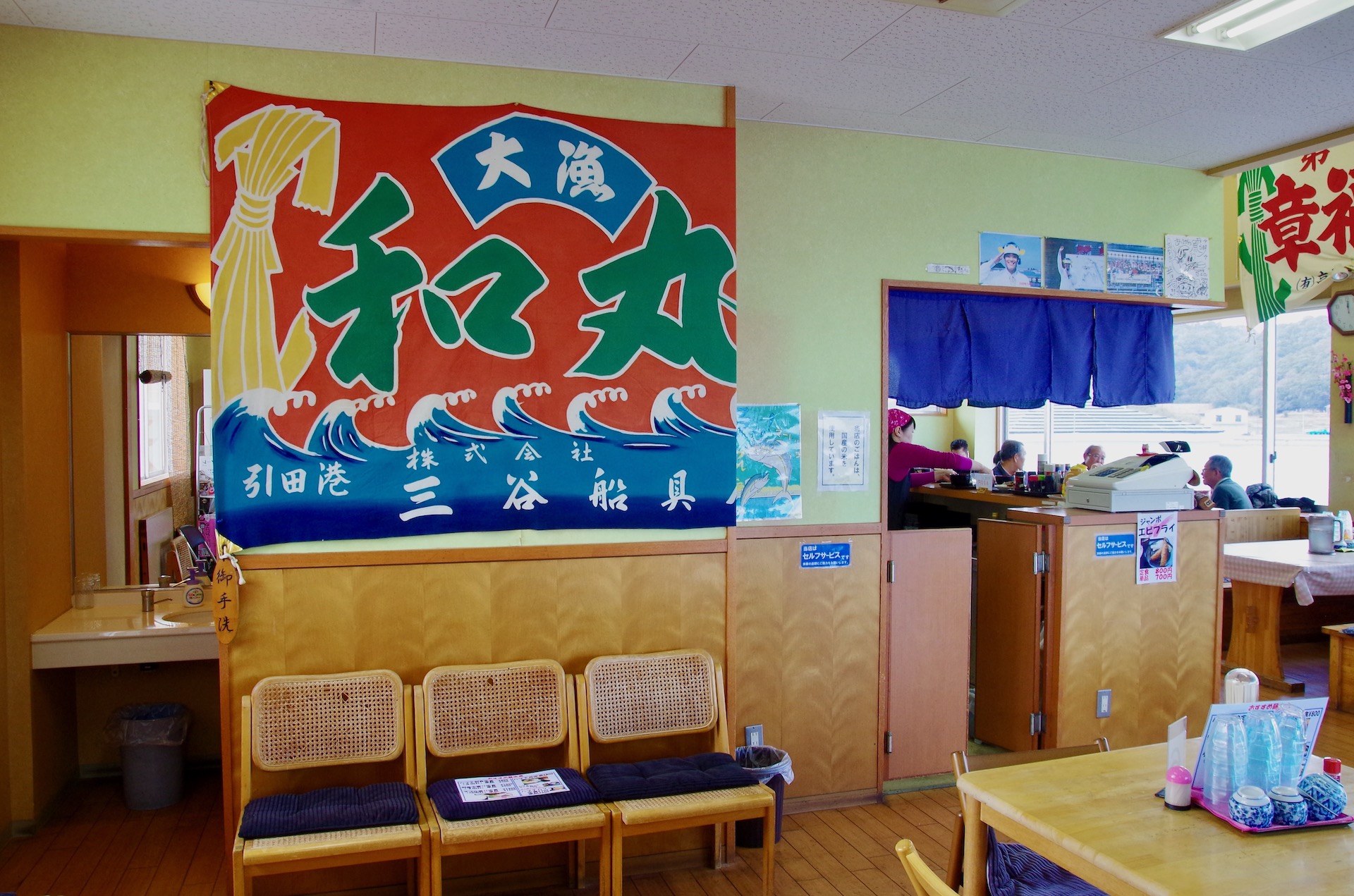 The product center “wa-san” sells raw hamachi and local sea products on the first floor. On the second floor, you can taste a variety of hamachi set meals using different cooking methods in the restaurant named “wa-san tei”.
The product center “wa-san” sells raw hamachi and local sea products on the first floor. On the second floor, you can taste a variety of hamachi set meals using different cooking methods in the restaurant named “wa-san tei”.
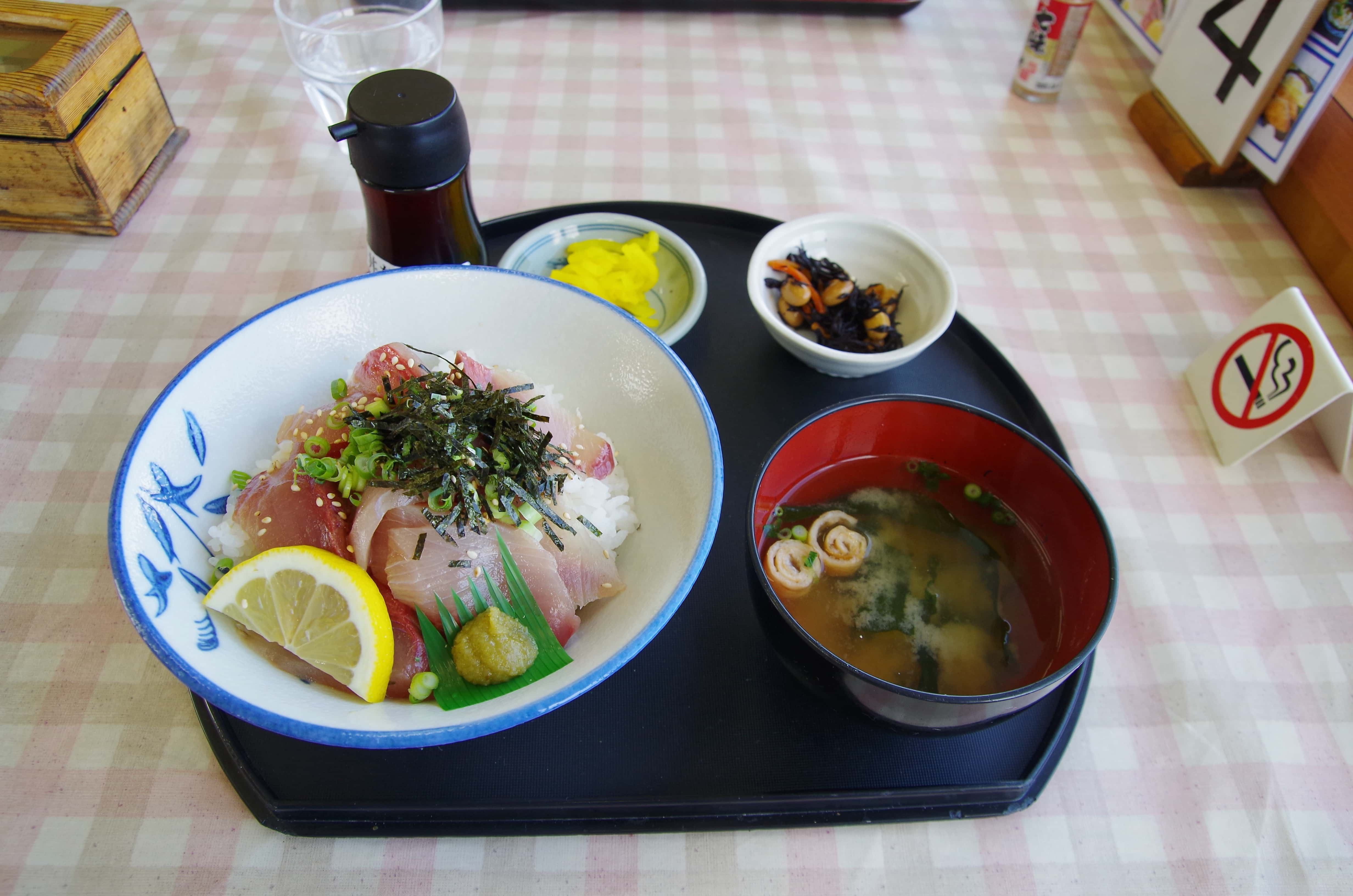
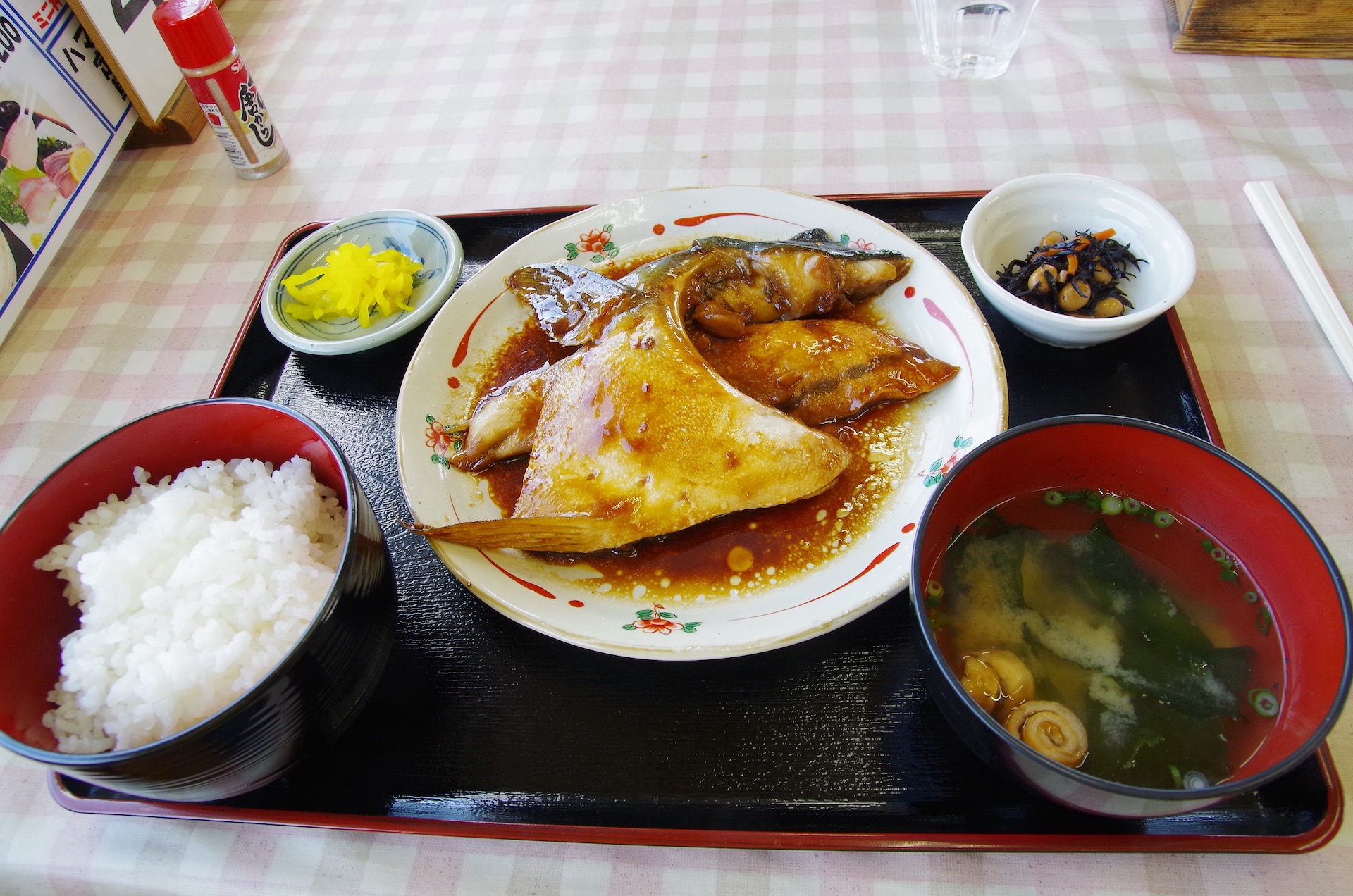 The best advantage of aquaculture is the possibility to offer freshest fishes all over the year with stable quality. Therefore you can enjoy tasty “Hiketa yellowtail” whenever you visit “wa-san tei”, like the hamachi bowl set a generous portion of sashimi on rice, or the tasty braised fish chin. Besides “Hiketa yellowtail”, the restaurant also serves many kinds of seafood from the Setouchi Inland Sea which will satisfy all visitors.
The best advantage of aquaculture is the possibility to offer freshest fishes all over the year with stable quality. Therefore you can enjoy tasty “Hiketa yellowtail” whenever you visit “wa-san tei”, like the hamachi bowl set a generous portion of sashimi on rice, or the tasty braised fish chin. Besides “Hiketa yellowtail”, the restaurant also serves many kinds of seafood from the Setouchi Inland Sea which will satisfy all visitors.
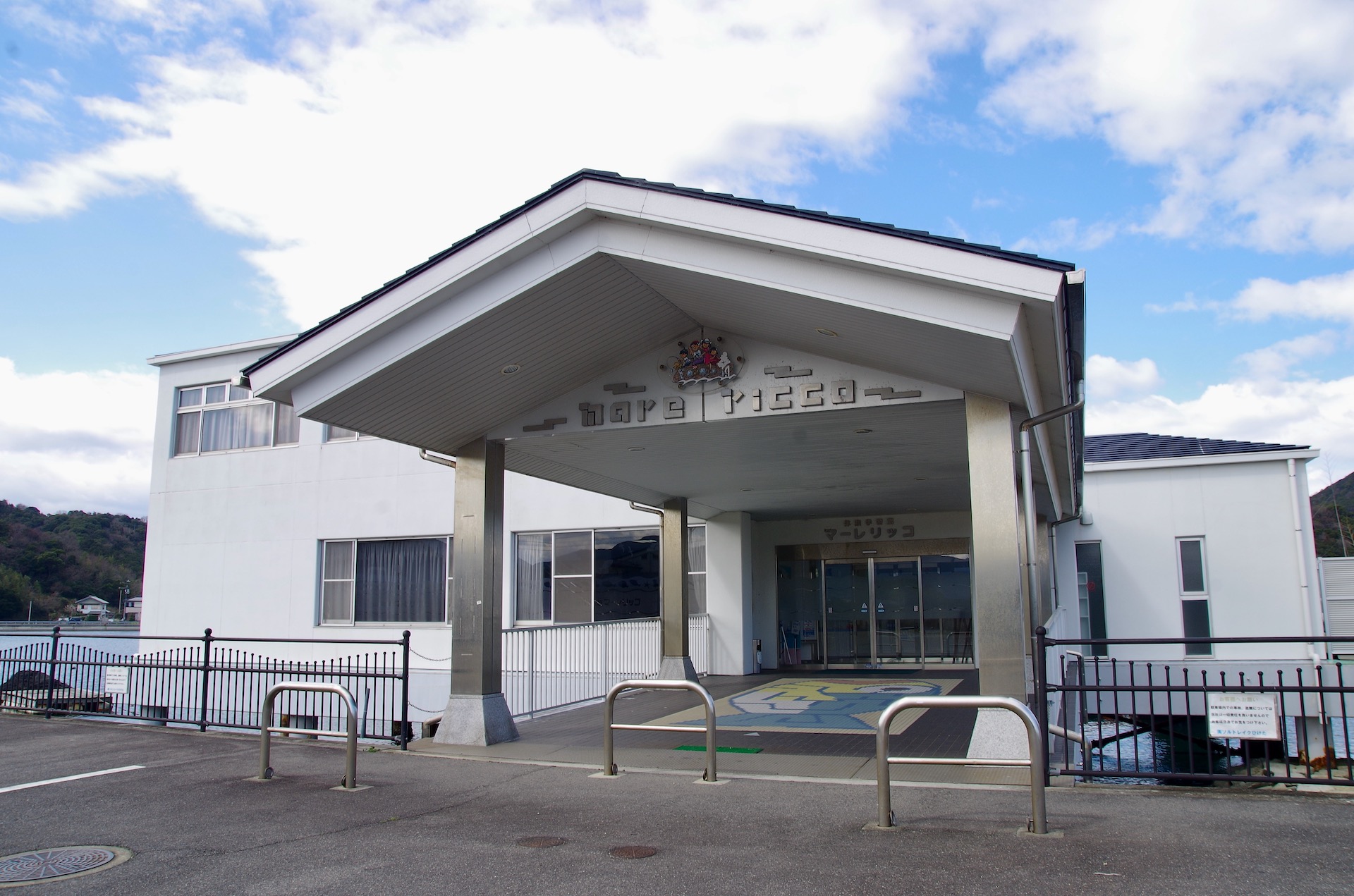 After the meal, you visit the “Fish Hook” Adoike fishing ground nearby if you like fishing, or the marre ricco where you can experience feeding hamachi or fishing sea bream. If you have time, do not miss to visit Hiketa and discover the aquaculture history of Adoike hamachi.
After the meal, you visit the “Fish Hook” Adoike fishing ground nearby if you like fishing, or the marre ricco where you can experience feeding hamachi or fishing sea bream. If you have time, do not miss to visit Hiketa and discover the aquaculture history of Adoike hamachi.
INFORMATION
Adoike 安戶池
Access: 25-minute walk from JR Hiketa station.
- Address:〒769-2901 香川県東かがわ市引田4373番地
- Business hours: 9:00~17:00
- Closed on: Tuesday, Year-end and New Year holidays
- TEL: +81-87-933-2800
- WEB: http://www.saltlake-hiketa.co.jp/
- Wi-Fi: N/A
- Language: Japanese
- Credit card: N/A
wa-san
- Business hours: 7:00~16:00
- Closed on: 1/1~1/2
wa-san tei
- Business hours: 10:30 ~ 13:30 (weekdays), 10:30 ~ 14:00 (holiday)
- Closed on: Tuesday, 12/29 ~ 1/2
FISH HOOK
- Business hours:7:00~16:00
- Closed on: 1/1 ~ 1/2
- Price: According to the season, period, and usage time, JPY1,000~7,000. Further price information.
marre ricco
- Business hours: 9:00~17:00
- Closed on: Tuesday, 12/29 ~ 1/2
- Price: JPY100 (free under 3 years old),fish feed JPY200
- Fishing experience: JPY500(Including fishing rod and one sea bream
- TEL: +81-87-933-2929

